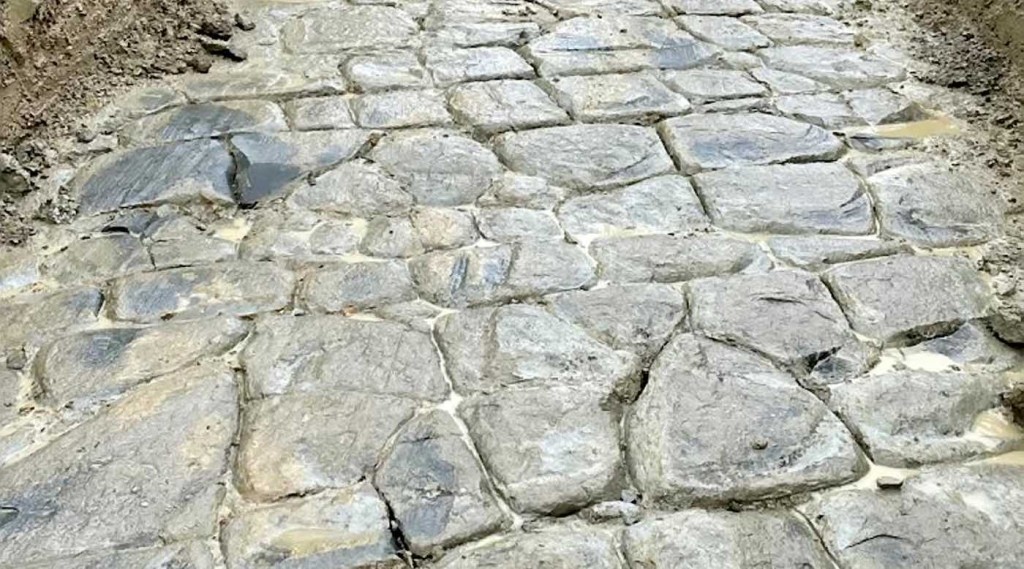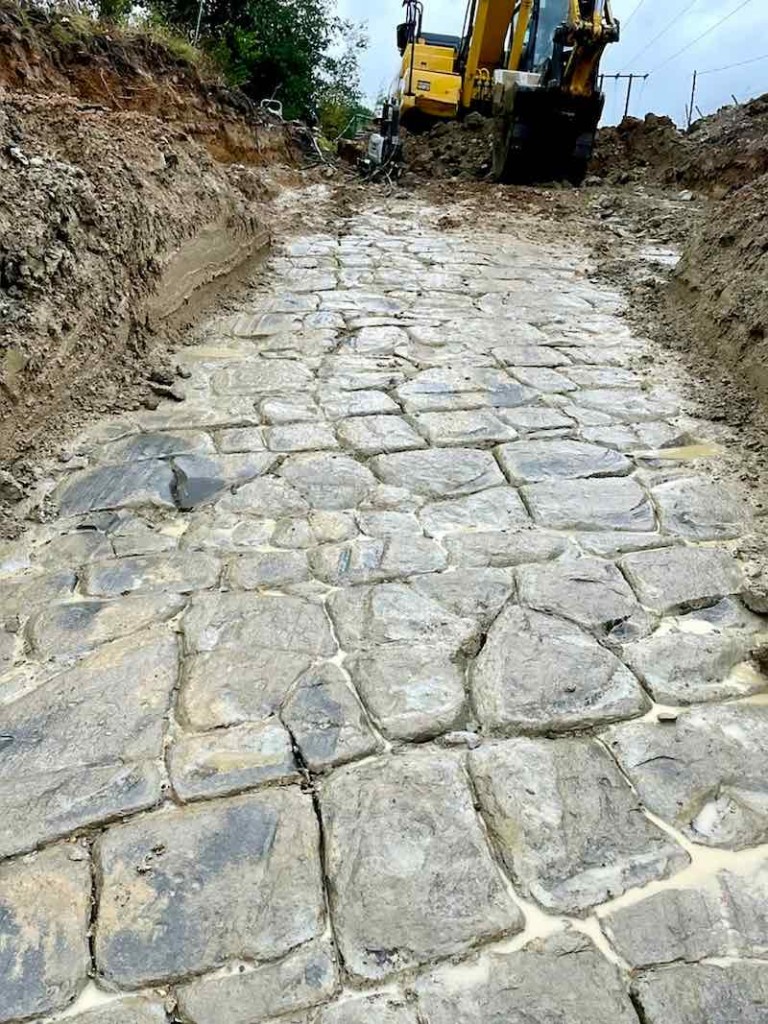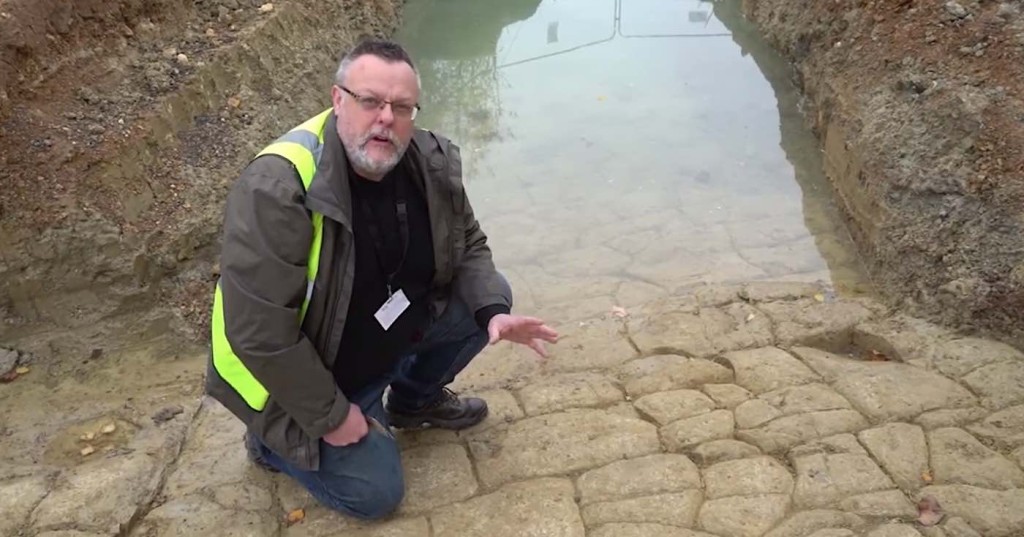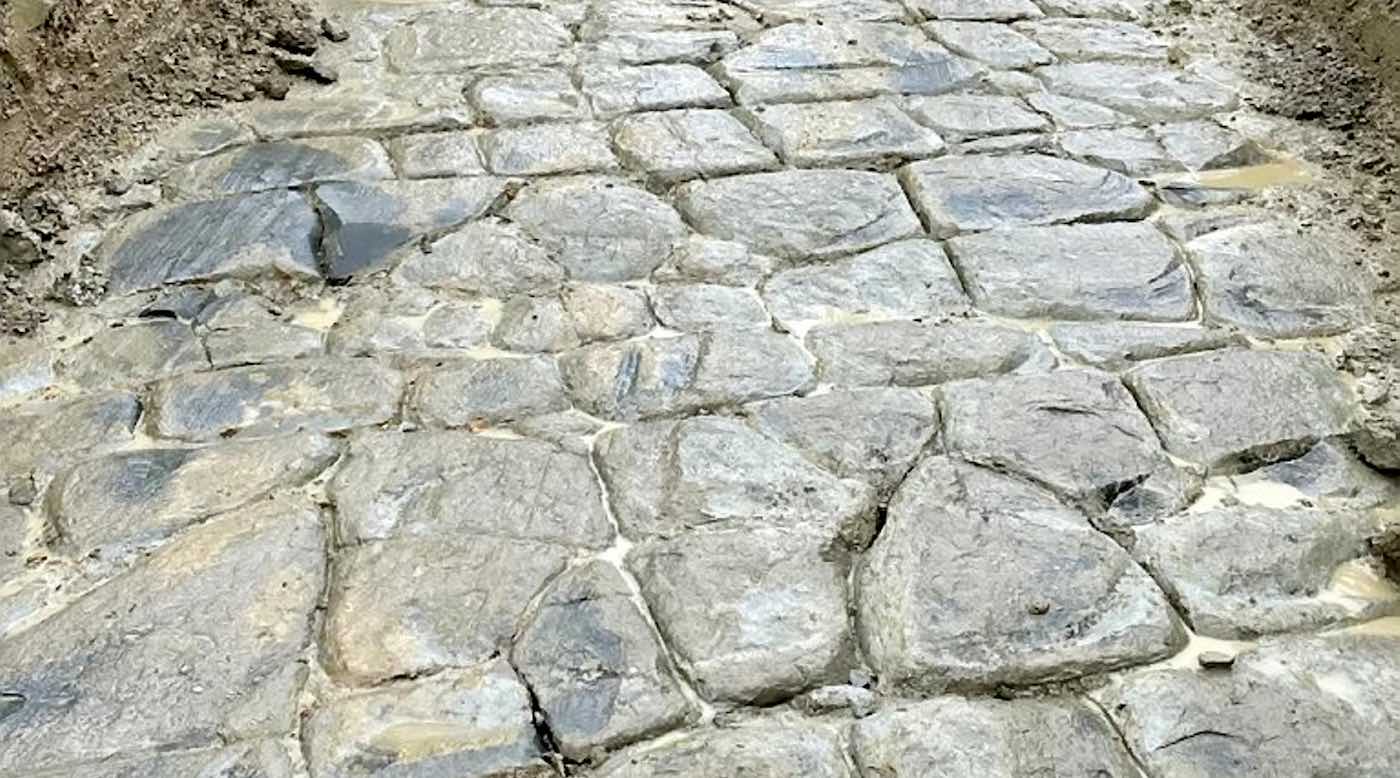
Workmen have uncovered a suspected Roman road in a field dating back 2,000 years that could be the only one of its kind in Britain and of ‘world importance.’
Archeologists say the cobbled ford uncovered in Worcestershire could be the finest Roman example of its type in the UK. In fact, the only existing roads in such a state of preservation are found in Pompeii and Rome.
The stretch, measuring 32-ft by 9.6 feet wide (10 x 2.9 meter), was discovered during routine utility work by Severn Trent Water a few weeks ago in an area called Evesham.
The exact location of the discovery is being concealed but it was found by a river where a Roman-era villa complex was previously uncovered four years ago.
Excavations are now taking place to find out more about the site, but experts say everything points to it being a genuine Roman structure—built 1,900 years ago.
“At the moment everything is ticking the boxes for it to be Roman but it still feels too good to be true so we are keeping an open mind,” said Aidan Smyth, archeology officer from Wychavon District Council where the water works were being dug, adding that seeing it first hand “took his breath away.”

The owners of the property contacted Wychavon District Council and a team from Historic England is now expected to analyze the excavations.
The road is a ‘ford,’ or a small river crossing, and also has ruts in the stones indicating it was was used by carts for a long time.
“If it is a first-century Roman feature it is the only one of its kind to be found in Britain to date,” said Smith, who noted no one was building roads like this during the Medieval Period.

“If it was to be a Roman feature, with its only comparisons in Rome and Pompeii, you could argue it’s of world importance, not just of national importance. The stonework is absolutely perfect.”
Smith explains in the video below how the Romans were the only road builders to ever build their roads like they built walls. During excavations Smith explains the team found “batted” stone curbs, meaning to be laid at a steep angle rather than vertically. They were made of a different stone than the flat cobbles passersby would walk upon.
“Now I’ve lots of evidence in this part of Evesham for Medieval batted stone walls, my problem is I’ve not got anything Roman to compare it with,” Smith said. “So it’s not that it isn’t Roman, it just could have a Medieval phase to it.”
SIMILAR: Viking Age Shipyard Uncovered at Birka is Like Nothing Ever Found Before
Wychavon District Council has confirmed as of yet, no dateable finds such as pieces of pottery or coins have been discovered which are usually used to help date the site.
Worcestershire is fertile ground for important archaeological finds as Worcester was possibly the site of the Roman town of Vertis. The Roman army passed through the area now known as Worcestershire in the 40s and 50s CE as it pushed west to reach the River Severn on its way to Wales.
RELATED: Incredible Discovery Beneath the Southern Amazon Reveals Urban-Agrarian Society Never Seen Before
Gravel will be taken from under the cobblestones and above them in the flood material called alluvium, to get a good idea of when each sets of minerals saw the sun last.
Readers looking to pursue a career in archeology should watch the video below, as it’s a very accurate depiction of the profession.
SHARE This Find Of World Importance On Your Social Media Of Choice…




















